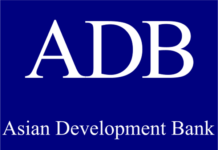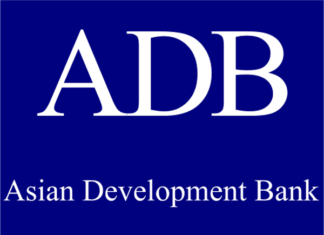Asian Development Bank (ADB) has forecasted that inflation in Pakistan will remain elevated at about 25% in the ongoing fiscal year, driven by higher energy prices, but is expected to ease to about 15% in FY25.
In its recent Asian Development Outlook (ADO), the bank said that Pakistan’s central bank cut policy rates as inflation fell to 11.8% in May, down from 38.0% in the same period last year.
“Although inflation forecasts of Bhutan, India, and Pakistan for FY2024 and FY2025 remain the same as forecasted in its ADO April 2024, the inflation projections for Bangladesh and Maldives are now expected to be higher,” it added.
The bank further said that Pakistan’s public debt is expected to decline by 7 percentage points to 70% of GDP in 2024–2025. Despite these projections, interest payments are expected to require a staggering 62% of fiscal revenues, up from 41% in 2022–2023.
The ADB has slightly raised its economic growth forecast for developing Asia and the Pacific this year to 5.0% from a previous projection of 4.9%, as rising regional exports complement resilient domestic demand. The growth outlook for next year is maintained at 4.9%.
Inflation is forecast to slow to 2.9% this year amid easing global food prices and the lingering effects of higher interest rates.
After a post-pandemic recovery that was driven mainly by domestic demand, exports are rebounding and helping propel the region’s economic growth. Strong global demand for electronics, particularly semiconductors used for high-technology and artificial intelligence applications, is boosting exports from several Asian economies.
“Most of Asia and the Pacific is seeing faster economic growth compared with the second half of last year,” said ADB Chief Economist Albert Park.
“The region’s fundamentals remain strong, but policy makers still need to pay attention to a number of risks that could affect the outlook, from uncertainty related to election outcomes in major economies to interest rate decisions and geopolitical tensions.”
While inflation is moderating toward pre-pandemic levels in the region as a whole, price pressures remain elevated in some economies. Food inflation is still high in South Asia, Southeast Asia, and the Pacific, in part due to adverse weather and food export restrictions in some economies.
The growth forecast for the People’s Republic of China (PRC), the region’s largest economy, is maintained at 4.8% this year. A continued recovery in services consumption and stronger-than-expected exports and industrial activity are supporting the expansion, even as the PRC’s struggling property sector has yet to stabilize. The government introduced additional policy measures in May to support the property market.
The outlook for India, the region’s fastest-growing economy, is also unchanged at 7.0% for fiscal year 2024. India’s industrial sector is projected to grow robustly, driven by manufacturing and strong demand in construction. Agriculture is expected to rebound amid forecasts for an above-normal monsoon, while investment demand remains strong, led by public investment.
For Southeast Asia, the growth forecast is maintained at 4.6% this year amid solid improvements in both domestic and external demand. This year’s outlook for the Caucasus and Central Asia is raised to 4.5% from a previous projection of 4.3%, driven in part by stronger-than-expected growth in Azerbaijan and the Kyrgyz Republic. In the Pacific, the outlook for 2024 is maintained at 3.3% growth, driven by tourism and infrastructure spending, along with revived mining activity in Papua New Guinea.























